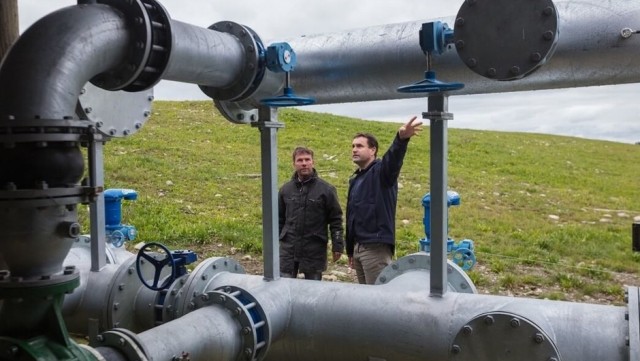Toni Townes-Whitley discusses ‘The Imperative for Technology & Sustainability’

Earlier this year, I wrote about the intersection of technology and sustainability. Since then, the challenges to our climate remain a clear and present danger. Making recent headlines is an Intergovernmental Panel on Climate Change (IPCC) special report—Global Warming of 1.5°C—that warns we have just 12 short years to save the planet.
The report sends a strong message: the fast approaching impacts of global warming are far greater and more catastrophic than was predicted. While we’re told that a 1.5°C world is still sustainable, radical and urgent transformation of all systems at an unprecedented scale is required, driven by rapid and far-reaching transitions in energy, land, urban infrastructure (including transport and buildings) and industrial systems. To maintain a 1.5°C limit, acceleration of solutions is an imperative for all relevant actors, around the world.
At Microsoft, our mission is to empower every person and every organization on the planet to achieve more. This includes helping to create a safe and sustainable planet in a resource-constrained world. In 2009, we committed to change the way we operate to reduce our own carbon footprint. Since 2012, Microsoft’s global operations in more than 100 countries have been carbon neutral. And we are on target to reach our latest goal—to reduce our operational carbon emissions 75 percent by 2030.
We remain optimistic about the role of technology and how, by accelerating the pace of innovation, we can turn the corner on these multiple and manifest sustainability threats to our planet. However, we need much more than a technological fix; we need a balanced set of system-wide actions. To achieve the necessary system-level transformations, the IPCC special report calls for multi-level governance, institutional capacity, policy instruments, mobilization of finance and changes in human lifestyle behaviors, as well as technological innovation.
In January, Microsoft joined 200 forward-thinking companies that form the World Business Council for Sustainable Development (WBCSD). Working with partners committed to accelerating sustainable development like WBCSD is an important part of enabling this progress, and at its recent annual Council Meeting in Singapore, I was honored to join the WBCSD Executive Committee.
At that event, I spoke about the opportunities for technology that are now a key imperative in the system-wide efforts needed to get us back on the right sustainability track. When human ingenuity and technology meet, they have the power to solve some of the biggest environmental challenges of our time. And we’re already seeing some incredible innovation examples from those on the front lines of sustainability—across the private and public sectors and the agriculture industry.
· Global brand leader Mars Food is using advanced supply chain technology built on Microsoft Azure’s Blockchain Services to make new breakthroughs in its efforts to source all their materials in a sustainable way. In doing so, not only are they protecting the environment, they are building trust with consumers through transparency, helping farmers improve their lives, and guaranteeing high-quality rice to their customers.
· Municipal authorities in the city of Gandia in Spain have installed more than 13,000 connected lamp posts across the city to remotely control and monitor energy use, using Microsoft’s Azure cloud. By making this one specific change, the city now spends 80 percent less on energy and has reduced CO2 emissions in the process.
· Innovations like SCADAfarm are also making significant strides to help sustainably feed the world. Developed by WaterForce and Schneider Electric and using Azure IoT, the solution enables farmers to conserve resources with a precision sprayer that only waters when needed. With more control and visibility into operations, farmers like New Zealand’s Black Hills Farm are reporting up to 50 percent energy savings in the first season, utilizing 30 percent less water and producing higher crop yields.
And these are just a few of the exciting examples of technology’s transformative potential for a sustainable future!
We live on a small planet, and we all have a role to play in protecting it. The WBCSD is leading companies to identify, collaborate and mobilize around the opportunities we have, to respond at scale, and Microsoft is proud to be part of these efforts. I encourage you to learn more about the work being driven by the WBCSD.
